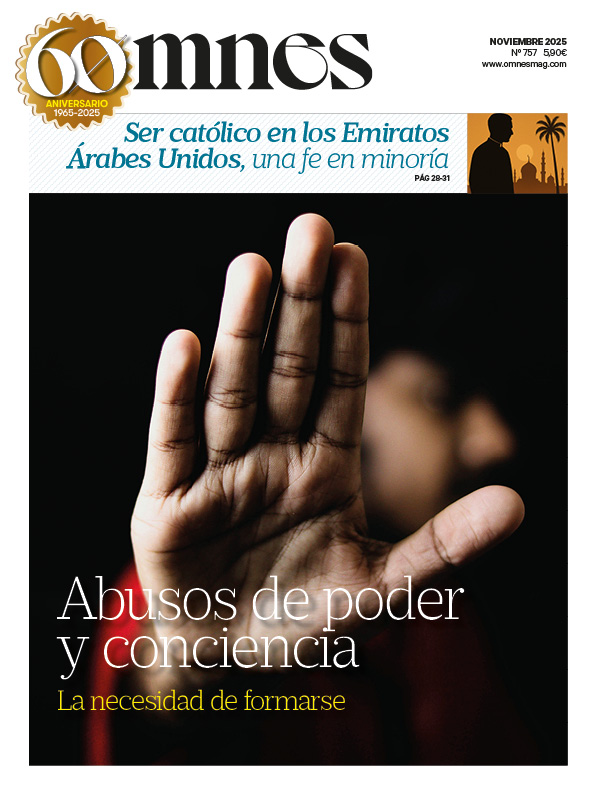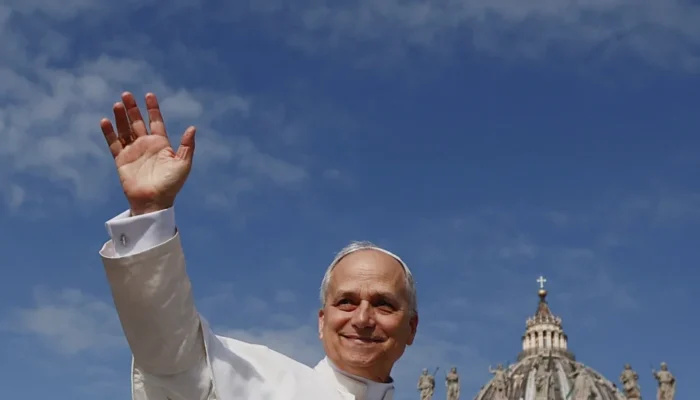In the 15th century, there was a brief union between Christians. It was during the pontificate of Pope Eugene IV. A papal delegation, which included Nicholas of Cusa, accompanied Emperor John VIII and Patriarch Joseph on their journey from Constantinople to Rome. The result was the union of the Greek Orthodox Church with the Catholic Church (July 6, 1439).
On his journey from Constantinople to Italy, Nicholas of Cusa had an experience that was decisive for his philosophical conception. He saw how the horizon of the sea appears to extend in a straight line, yet that line is part of a circle with a very large radius, evidence of the spherical shape of the Earth. That experience influenced his work. “On learned ignorance.”. We know that because of our finitude we cannot attain truth in its fullness and precision. And the more aware we are of our ignorance, the more it becomes learned ignorance, wisdom, a wisdom that starts from doubt but presupposes the existence of truth that can only be founded on infinite, eternal, and creative intelligence.
The failure of the union between East and West
The union of the churches, proclaimed on July 6, 1439, in the church of Santa Maria dei Fiori in Florence, failed shortly thereafter. Metropolitan Isidore of Kiev proclaimed it upon his arrival in Moscow, but was arrested by order of Prince Vasili, who forbade the Russian Church from accepting any union with the Latins. In the Byzantine Empire, the Greek bishops, returning from Florence, found a hostile popular climate.
Although the union was promulgated in Hagia Sophia on December 12, 1452, in the presence of Emperor Constantine XI, the papal legate, and the Byzantine patriarch, the reaction was a violent riot, started by the clergy and monks, who shouted, joined by the masses: “Let the turban of the Turks reign over Constantinople, rather than the miter of the Latins!”.
Half a year later, that cry was sadly fulfilled: on May 29, 1453, the capital fell to the Turks, the last emperor died in battle, and the Byzantine Empire came to an end.
In Rome, Isidore of Kiev, who had fled Russia, and Bessarion of Nicaea, both of whom had become cardinals of the Church, were for years a living reminder of something that could have been but was not, because men did not want it to be.
Meditating on the fall of Constantinople, Nicholas of Cusa conceived his great vision of a future universal reconciliation: “On the peace of faith” on the peace of faith, completed before January 14, 1454.
Following Pius II to the Adriatic coast, where the Christian crusader fleet would gather to fight the Turkish invasion, Nicholas suffered the final attack of a chronic illness and died in Todi (Umbria) on August 11, 1464. Three days later, his friend Eneas Silvio, Pope Pius II, died in Ancona.
Nicaea: root and symbol of Christian unity
In this Jubilee Year dedicated to hope, a very significant anniversary stands out: it has been 1700 years since the first ecumenical council, the Council of Nicaea, was held. It is a «milestone,», as Pope Francis emphasizes in the Bull of Indiction for the Jubilee of 2025. For all Christians, it represents an event with which to identify and find unity.
It is one of the great chapters in the history of the Church. The Council was convened by Emperor Constantine in 325 with the task of preserving unity, «seriously threatened" -as Francis recalls in the document «Hope does not disappoint»– for denying the divinity of Jesus Christ and his equality with the Father. The Council of Nicaea, attended by some 300 bishops, including papal legates and representatives of the Eastern Church, condemned the heresy of Arius. From Nicaea comes an invitation that remains relevant today, addressed to all Churches and ecclesial communities: to continue on the path toward unity. The Council Fathers used the expression «We believe» for the first time.
The Council of Nicaea arose as a result of problems in some of the main episcopal sees of the East, including Alexandria and Antioch. Emperor Constantine's contribution was decisive, and he sought unity in his own way, a religious peace that could also guarantee peace for the people. It is also unity to see that the Council of Nicaea—today Iznik, a city of pilgrimage—is in some way related to this jubilee time of hope.
For the Eastern Churches, the Council of Nicaea is the first ecumenical council. This event is commemorated in almost all the traditions of the various Eastern Churches in the liturgical year with a special feast. The declaration that «Christ is true man and true God.» responds to the heresy of Arianism. The expression Filioque added by the Latin Church to the Nicene-Constantinopolitan Creed, namely that the Holy Spirit proceeds from the Father and the Son, has a specific connotation: it is intended to emphasize the divine nature of the Son.
The Filioque issue has been one of the causes of dissent between the Eastern and Western Churches. In the 20th century, thanks to ecumenical dialogues between Catholics and Orthodox Christians, it has become clear that this is not an issue that causes division. Some scholars suggest that the Latin Church should reflect on whether the Filioque can be removed and return to the older form.
A common Easter
The Council of Nicaea also debated the question of when Easter should be celebrated. As early as the fourth century, there had been a desire to «celebrate Easter together»: Emperor Constantine, according to Eusebius of Caesarea, wanted Christians to celebrate it on a single date. One of the decisions taken at the Council of Nicaea was not to celebrate Easter with the Jews.
In the 12th century, several Byzantine canonists also added «that Easter should not be celebrated before the Jews.» Today, in the Gregorian calendar, Easter may precede Passover. Scholars argue that this was not for reasons related to anti-Semitism, but due to the fact that, after several destructions of Jerusalem, even the Jews themselves had lost the ability to accurately calculate Passover. Now, on this anniversary marking 1,700 years since the Council of Nicaea, the advisability of arriving at «a single date for Easter» is being considered.








